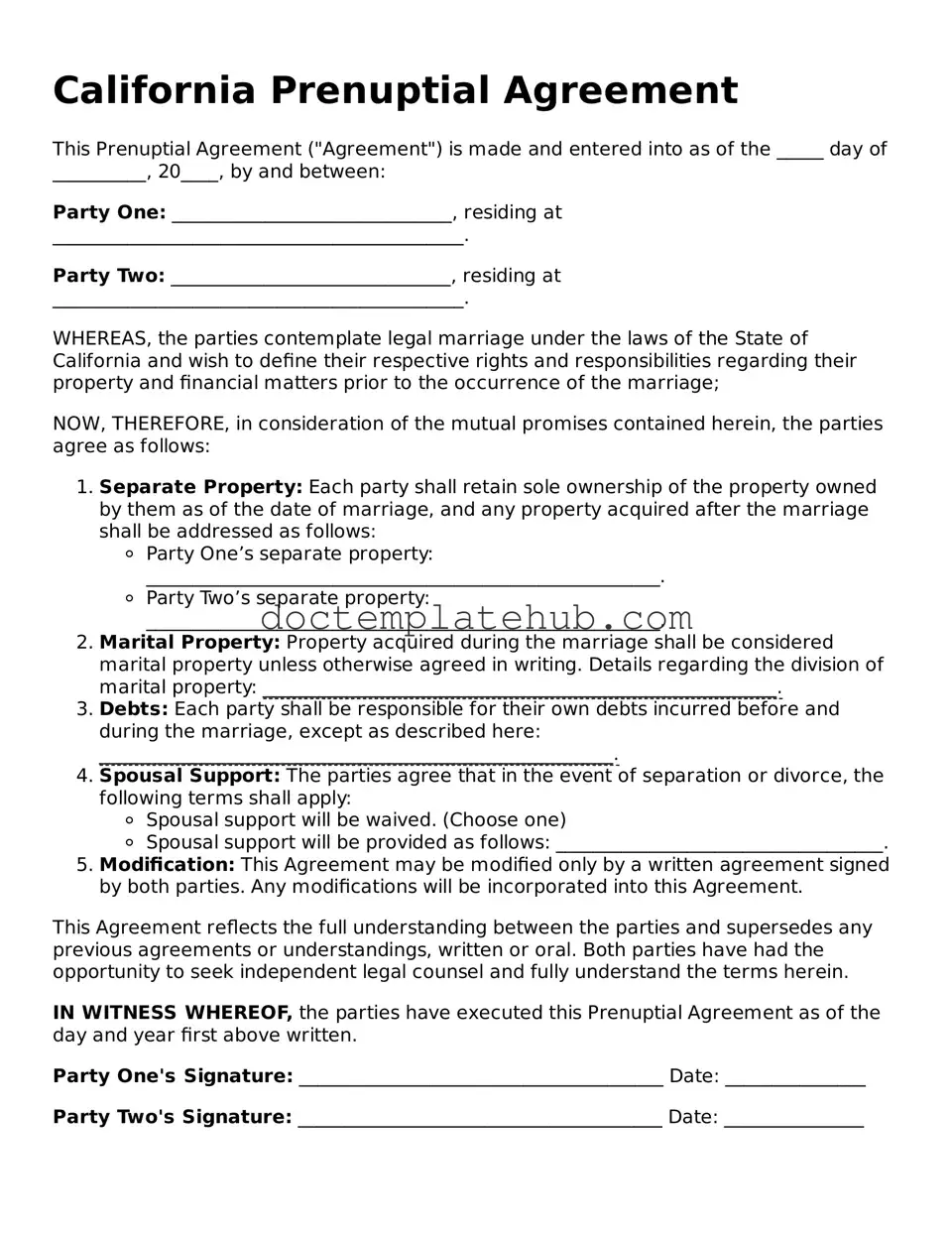What is a prenuptial agreement in California?
A prenuptial agreement, often referred to as a "prenup," is a legal contract made by two individuals before they get married. In California, this agreement outlines how assets and debts will be divided in the event of a divorce or separation. It can also address other matters, such as spousal support. The primary goal of a prenup is to provide clarity and protect both parties' interests, ensuring that expectations are set before the marriage begins.
What are the requirements for a valid prenuptial agreement in California?
For a prenuptial agreement to be considered valid in California, it must meet certain criteria. First, both parties should enter into the agreement voluntarily and without any coercion. Full disclosure of assets and debts is essential; each party should know what the other is bringing into the marriage. The agreement must be in writing and signed by both parties. Additionally, it’s advisable for each person to seek independent legal counsel to ensure they understand their rights and the implications of the agreement.
Can a prenuptial agreement be changed after marriage?
Yes, a prenuptial agreement can be modified or revoked after marriage, but this requires a new written agreement that both parties sign. It’s important to approach any changes with care. Open communication between partners can help ensure that both parties are comfortable with the modifications. Additionally, just like the original prenup, any changes should be made with full disclosure and ideally with legal advice to avoid misunderstandings later on.
What happens if a prenuptial agreement is not in place?
If a couple does not have a prenuptial agreement in place and they decide to divorce, California's community property laws will govern the division of assets and debts. This means that any property acquired during the marriage is typically considered jointly owned and will be divided equally. Without a prenup, spouses may have less control over how their assets are distributed, which can lead to disputes and lengthy negotiations during a divorce. Having a prenup can provide a sense of security and clarity, making the process smoother should the unexpected occur.
